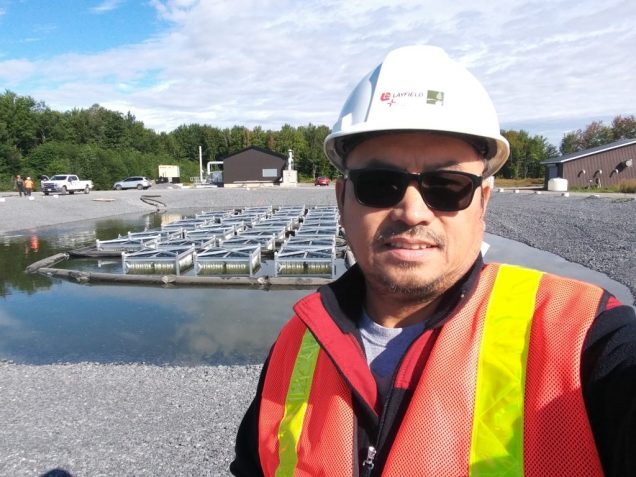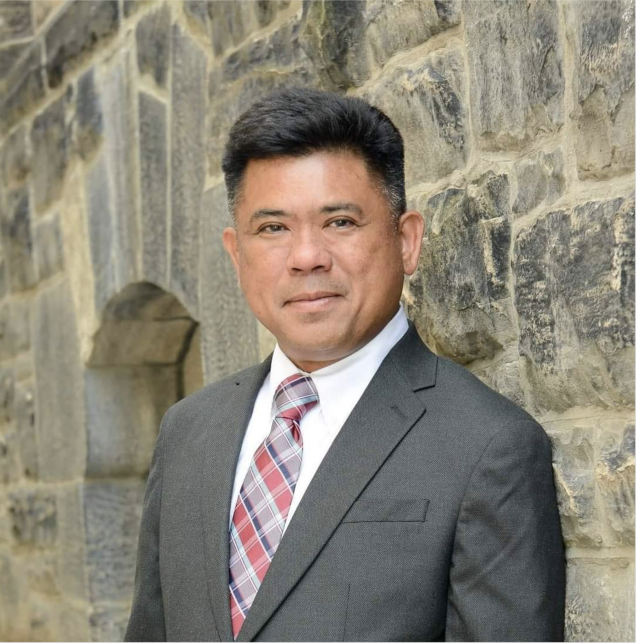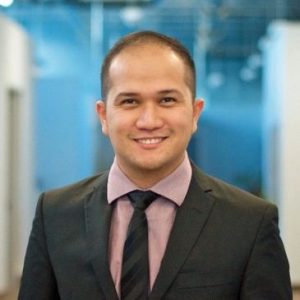Engineers: ‘Notoriously difficult licensing process’
Engineers: ‘Notoriously difficult licensing process’

Leo Gutierrez
SPECIAL REPORT, PART 2: DEPROFESSIONALIZATION OF IMMIGRANTS
By Althea Manasan
The Philippine Reporter
When Leo Gutierrez arrived in Toronto with his family in 2008, the only job he could get was as a kargardor at a nearby transport company, covering the evening shift.
“It was really a challenging time in my life,” said the father of five. “If I was alone I would have gone back home, but I had my family with me.”
While he was grateful to have work, it was a far cry from what he had been doing before coming to Canada.
Gutierrez is a trained civil engineer and had been working in Dubai as a senior quantity surveyor for several years. “They pay you a lot [in Dubai], especially Filipino engineers,” he said. “We have a very good reputation there.”
But continuing to work as an engineer was not an option Gutierrez even considered after he arrived. In order to be a practicing engineer in Canada, Gutierrez would need a license, but he had heard that getting one was a notoriously difficult process for immigrants.
“The truth is…it’s not that easy to become an engineer in Canada,” he said.
Gutierrez’s journey is a common one among Philippine-trained engineers who immigrate to Canada. Although by some accounts, the licensure process in Ontario has eased over the last two decades, many foreign-educated engineers still face barriers when trying to practice their profession here.
Only 20 per cent of men with degrees from outside Canada actually work in engineering compared to 43 per cent with Canadian degrees, according to an analysis of 2015 census data from the Ontario Society of Professional Engineers.
The numbers are even worse for immigrant women: only 13 per cent with degrees from outside of Canada have engineering jobs compared to over one third of women with Canadian degrees. In addition, about one half of women with foreign degrees are underemployed, meaning that they work in jobs not requiring a degree.
A 2018 report published by the Institute for Canadian Citizenship, titled Closed Shops: Making Canada’s engineering profession more inclusive of international engineers, outlined some of the barriers facing internationally educated engineers. They include an opaque, fragmented and lengthy licensure process; lack of access to and awareness of relevant opportunities; and a requirement for Canadian work experience to qualify for accreditation.
“It is not surprising that some [internationally educated graduates] become demoralized when trying to become practicing engineers in Canada: many struggle to find well-paying work within their field of training—despite immigration officials having determined they are attractive applicants, and there is labour market demand for their skills,” wrote report author Lauren Heuser.
She made several recommendations to address systemic issues, like offering support services and professional mentorship programs to new immigrants, and creating a national standard for assessing international credentials. (Currently, the licensing process for engineers is overseen by a different regulatory body in each province, each with their own standards.)

Dave Estrella
Despite these challenges, progress has been made in the last 20 years, says Dave Estrella, vice president of the Association of Filipino-Canadian Engineers (AFCE). The organization provides networking and professional development opportunities, and helps Filipino-Canadians navigate the licensure process in Ontario.
“The process hasn’t changed, but they are more lenient now than it was before,” Estrella said.
In order to obtain a license in Ontario, Philippine-trained applicants must satisfy several requirements. First, they must complete a series of four written exams. Those with significant work experience may be allowed to do an oral interview instead.
Then, they must pass the National Professional Practice Examination (NPPE), which covers law and ethics. Finally, they must demonstrate four years of relevant work experience, one of which must be Canadian.
Although the process can be lengthy, Estrella says that it used to be even longer.
“In 2001, 2002, I remember Filipinos who applied for a license, they were given 12, 13 examinations,” he said, adding that it could take 10 years or more to complete them all. He explained that the Philippine education system for engineering has since been re-assessed by regulators to be of higher quality, hence the requirement for fewer exams.
The Professional Engineers of Ontario (PEO), the province’s regulatory and licensing body, did not respond to requests for an interview.

Renan Orquiza
Renan Orquiza, a civil engineer who immigrated to Toronto from Singapore in 2013, was able to get his license within 18 months of arriving. He now works as a senior environmental specialist for the Canadian government.
“I would say it was fairly smooth when I started applying for my license,” Orquiza said. “But you know what, it dawned on me that I’ve been talking to a lot of Filipinos who were having trouble getting their license.”
He got involved with the AFCE during its re-launch in 2019, helping other Filipino professionals navigate the licensure process.
Orquiza is also an instructor in a program at Humber College, which teaches both technical and soft skills to foreign-trained engineers to help them succeed in Canada. (These so-called bridging programs are another pathway to getting licensed through the PEO.)
“I would say compared to 10, 12 years ago, talking about de-professionalization…we’re in good shape, because we have motivated people right now who are really reaching out,” Orquiza said. “They can see the light.”
Gutierrez says that self-motivation is an important factor in getting more Filipino-Canadian engineers licensed and practicing in the field. He believes that professional networking groups can help.
He himself applied for his engineering license in 2019, after getting encouragement from the Filipino Construction Professionals of Ontario, a group he co-founded. He was granted his license last November.
“If other people believed I could do it, then why can’t I do it?” he said. “If I was not able to meet the members of the FilConPro, I may not be an engineer right now.”
Orquiza says he rarely sees Filipinos at engineering events, and wants to encourage them to put themselves out there.
“I find we’re quite shy in nature…shy to sell ourselves in the market, which is something that a lot of communities are doing—which is why we’re a bit behind in terms of representation,” he said.
He says things are getting better, however, and hopes to see more Filipino-Canadian leaders in the industry.
“We want to be a community that people think of when they think of engineers.”
Comments (0)